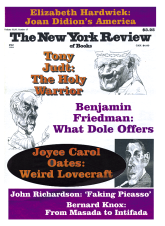1.
A characteristic series of images in Camilo José Vergara’s remarkable book portrays Newark Street in Newark, New Jersey. The first photograph, taken in January 1980, shows three row houses. The buildings are typical of the blue-collar, inner-city housing built in the early 1900s when booming cities like Newark were a magnet for industrial workers, both immigrants and native-born. The houses are not elaborate. They are merely serviceable, although a hint of classical decoration around the front doors lends them a certain dignity. It is evident that they have seen better days. The shallow front yards are ill-kempt and forlorn. Still, there are signs of human occupation: curtains and blinds, television antennas, a piece of garden fence. Nor are there any broken window panes. An old car is parked out front with a man standing beside it. The accompanying text tells us that he is the landlord, and his car is sagging at the rear because he has just loaded the trunk with domestic odds and ends stripped from the houses. He has decided to abandon his properties rather than invest more money in maintenance and repairs. He looks happy.
The second photograph was taken in April 1985, more than five years later. A group of people is standing in front of one of the houses. It appears to be trash pickup day, for there are garbage cans and boxes neatly stacked on the sidewalk. The trash—and the people—are evidence that the houses are still occupied. Otherwise, one might assume that they were derelict. Shingles are peeling off the walls. Almost all the window panes are broken; the windows are patched with corrugated cardboard, plastic garbage bags, and what look like bed-sheets. The ground is beaten hard and littered with debris. What is most striking about the photograph, however, is what is absent. The front walk of the middle house is still there, but it leads to—nothing. Where the house once stood there is a space; the building has simply vanished. The new landlord—the city—was unable to maintain the building and has finally torn it down. The row now resembles a gaptoothed smile, but there is nothing cheerful about the scene.
The third photograph was taken twelve months later. The process of urban decay has accelerated, and only one house of the original three is still standing. It appears to be empty, for its front door is boarded up with a sheet of plywood. The land where the houses once stood has been taken over by the adjacent garage, which uses it as a combination parking lot and dump. Two men are working on a car. The garage, at least, appears to have prospered, for the old swing doors of the previous year have been replaced by a new, overhead steel shutter.
The fourth and final photograph was taken in August 1994. The original urban scene of fourteen years earlier has been replaced by a view that, while not exactly bucolic, is starting to suggest a rural landscape. Where the houses once stood there is now a field. There are no bushes yet, but undoubtedly these will come. The city has erected a chain-link fence to prevent illegal dumping. It has also mounted a high-power flood lamp on the light pole, presumably to discourage trespassers. These are the only civic improvements. The sidewalk on which nobody walks is beginning to be overgrown with weeds; the concrete is cracking apart. Soon it, too, will disappear.
This Issue
October 31, 1996





